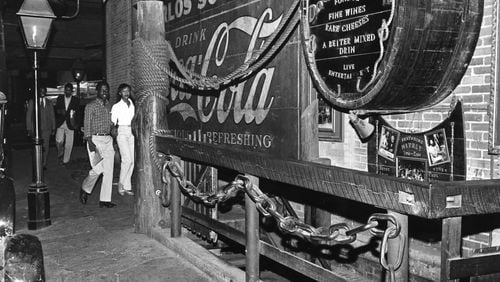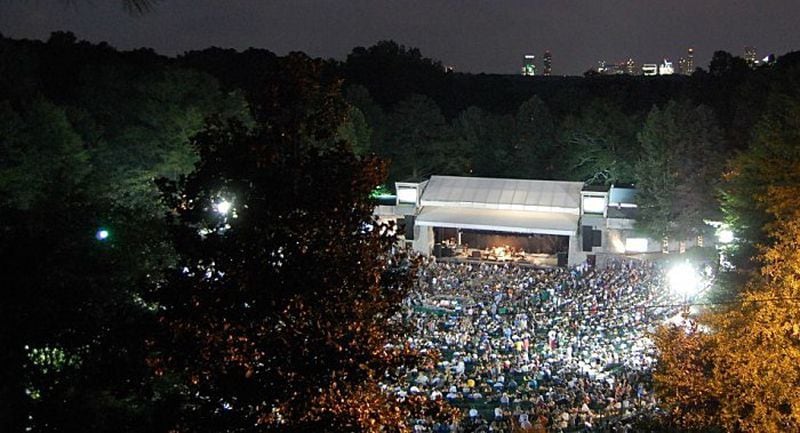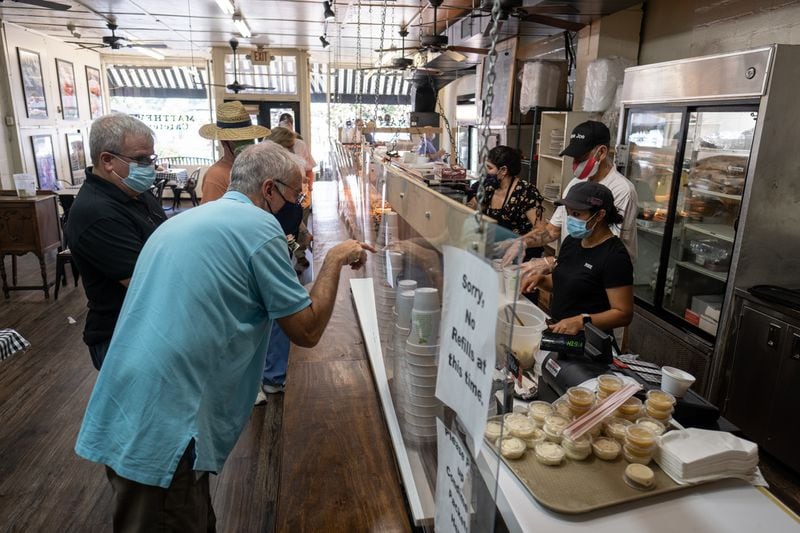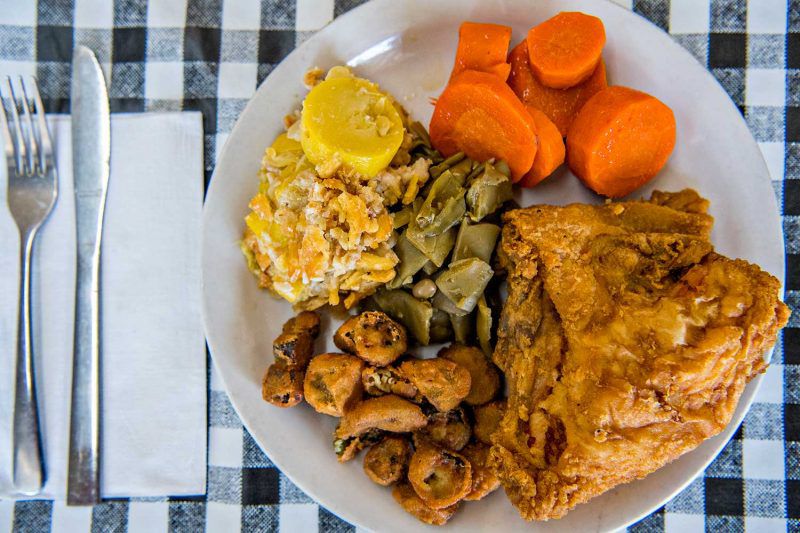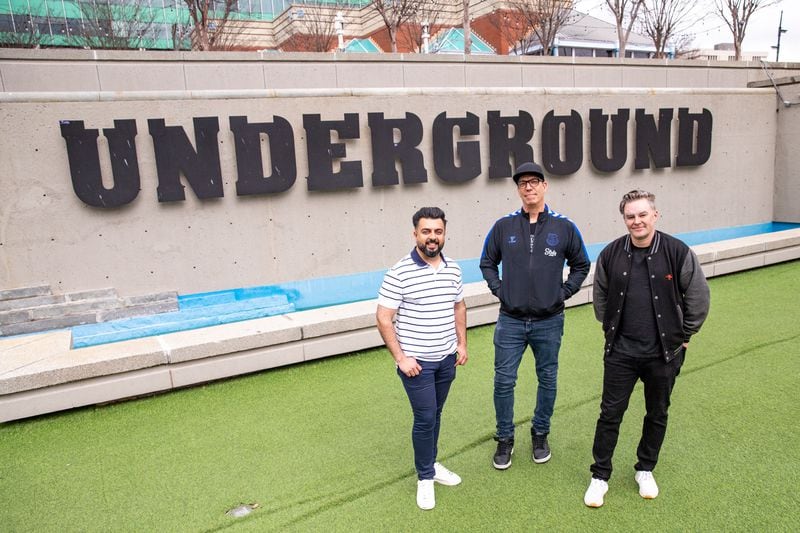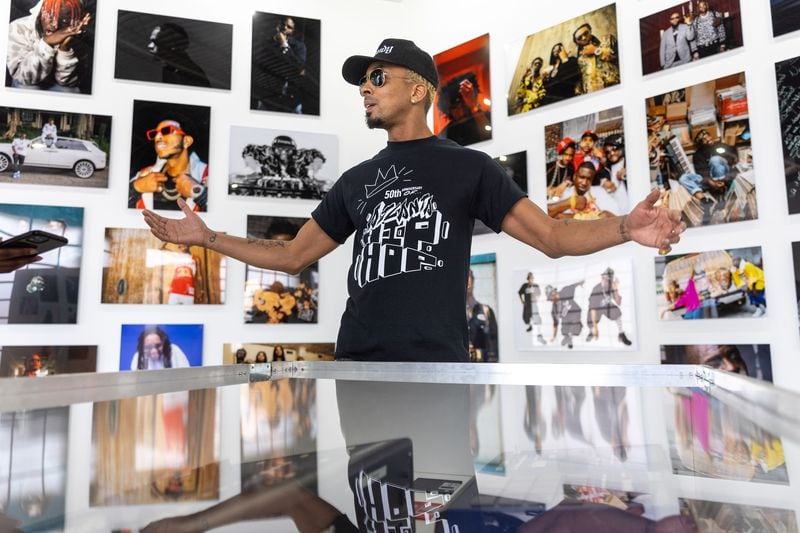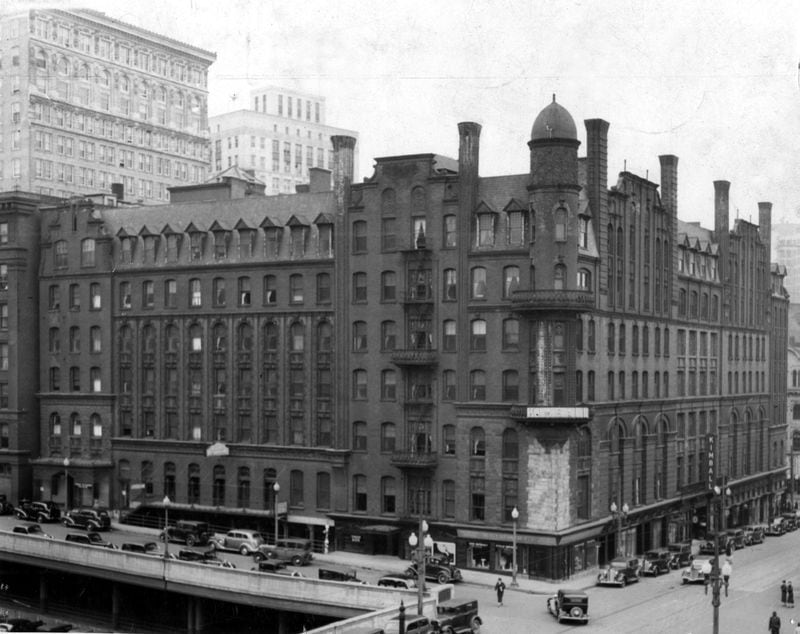To borrow from the immortal words of Ludacris and Jermaine Dupri, welcome to Atlanta where the players play, and we pave over history like every day.
In grand ATL tradition, this past year has been rife with the shuttering or uprooting of decades-old institutions. There was the closure last fall of the beloved 50-year-old dive bar The Rusty Nail. This year, the popular dance club MJQ Concourse, whose subterranean portal to late-night, sweaty, smokey magic and ineffable coolness may or not be replicable, moves from Ponce to Underground Atlanta.
King Williams, a journalist and filmmaker who writes about local news, arts and culture in his newsletter The Breakdown, says these kinds of losses are baked into the city’s ethos. Development is fueled by the idea that new always equals better.
“I’m glad that the King Center and that square block of Auburn Avenue (with Martin Luther King Jr.’s childhood home) still exists because if this would have been even 10 years ago or if it didn’t have a protection (as a National Historic Site), I wouldn’t be surprised if they took it down now and put up a placard that said, ‘This was the former home of Martin Luther King.’”
When we lose physical reminders of our history, our knowledge of the past disappears, he said. “What I think is important is that we’re losing historic and institutional memory. Especially in the digital era, people don’t remember things.”
When we launched this Throwback Atlanta series, it was with an eye toward highlighting the long-standing cultural gems — restaurants, theaters, music venues — that had escaped the bulldozer and retained their original character. But there are questions that accompany any place with longevity in Atlanta. What’s the secret? Is it luck? Business acumen? Community or civic support?
Moving forward, we’ll expand our lens to look at three longstanding institutions plus one now-forgotten piece of our past that no longer stands, and we’ll tap into local insiders to help find some meaning amid the rubble.
STILL STANDING
Credit: Contributed by Chastain Park Amphitheatre
Credit: Contributed by Chastain Park Amphitheatre
Chastain Park Amphitheatre — 1944
Conceived as the East Coast’s answer to the Hollywood Bowl, Chastain Park Amphitheatre was built during World War II by the Works Progress Administration (WPA), Pres. Franklin Delano Roosevelt’s signature program borne out of the Great Depression. Then called North Fulton Amphitheatre, it opened to the public on June 20, 1944, and was later renamed after Troy Chastain, former chairman of the Fulton County Board of Commissioners who came up with the idea.
Now, it bears a decidedly more corporate moniker: “Cadence Bank Amphitheatre.” Though you’d be hard-pressed to find many people who have stopped referring to it as Chastain. After changing hands several times over the years, the venue is still owned by the City of Atlanta but has been managed by Live Nation since 2016.
Director of Production Ruthie Marshall arrived at Chastain in 1978, having moved to Atlanta after college in Florida. She was originally hired as a runner for the production and promotional leads and then worked her way up.
As a producer, she serves as a liaison between the artist and the building, overseeing sound, lights, video, catering and transportation and facilitating the run of the show. She also makes sure that artists adhere to the residential area’s strict curfew and sound ordinances.
Luminaries who’ve taken to this outdoor venue have ranged from Johnny Cash to Diana Ross, Alice Cooper to Al Green, Erykah Badu to Billie Eilish. With a current seating capacity of about 6,900, the amphitheater hasn’t changed much since its inception – save a $6 million renovation just before the pandemic, which added a courtyard, a concessions operation with onsite food preparations, and – crucially for a venue that chiefly operates during the summer – air-conditioning in the bathrooms.
Credit: Robb D. Cohen/.RobbsPhotos.com
Credit: Robb D. Cohen/.RobbsPhotos.com
What has shifted is how people take in the shows. Famously, Chastain featured six-person tables where groups could bring in their own food and beverages. Over the years, it gained a reputation as a place where concerts were more like background noise for dining patrons.
“The table setup was traditional and definitely part of the charm,” Marshall said. However, “more and more, the artists are requesting no tables because they feel like they’re in Vegas.”
She remembers Al Jarreau asking an audience member, “‘Honey, what is that you’re eating?’ She said, oh, that’s salmon mousse.’ He looked at it and he went, ‘We just call that fish.’”
Another time, an audience member ran down the aisle to offer Sade a bite of food. “It got to be a strange culture that everyone got to be so comfortable. It was like being in your living room,” she said.
Some of Marshall’s favorite concerts at Chastain were acoustic acts like James Taylor, Crosby, Stills & Nash and Linda Ronstadt because of the impeccable sound enhanced by the natural topography. “When you want to hear the vocals, nowhere besides perhaps the Fox Theatre are you going to find a building that sounds better. There’s no delay system out at Chastain, and you can hear everything all the way at the back of the house.”
4469 Stella Drive NW, Atlanta. 404-233-2227, chastainparkamp.com
Credit: Ben Gray
Credit: Ben Gray
Matthews Cafeteria — 1955
Like a deep-fried “Fast and Furious” flick, it’s all about family at Matthews Cafeteria.
Established by Louise and Bill Matthews, the edifice with the red-and-white checkered tablecloths has sat largely unchanged on Tucker’s Main Street for almost seven decades. They serve Southern staples like fried chicken, macaroni and cheese, black-eyed peas and hushpuppies, and regularly top lists of best comfort food in the city. The restaurant has been featured twice on Guy Fieri’s “Diners, Dives and Drive-Thrus.”
Current proprietor Michael Greene is a third-generation owner, whose first memory of the establishment goes back to the early 1980s, when his parents — Charles and Alice Greene — made him a part-time dishwasher right after his 10th birthday.
By then, he was already interested in the culinary arts and was watching Julia Child and other cooking shows, trying to recreate their concoctions from an early age. “I gravitated to the kitchen, and I never left,” he said, describing himself as the kind of boss who gets food on his apron like everyone else.
Every generation has been faced with the question of whether to keep the family business. His dad, an engineering graduate from Georgia Tech passed up a job with a civil engineering firm in Seattle or buy the restaurant from its founders, Bill and Louise, his wife’s parents. Now, age 81, Charles still gets to the restaurant at 3 a.m. to get things started before the breakfast crowd.
Credit: From tuckerrestaurantweek.com
Credit: From tuckerrestaurantweek.com
With four sons ranging in age from 2 to 10, Greene said he hopes one day one of his kids will continue the tradition — if they want to. “Four generations, that would be amazing, I’m not going to lie.”
The restaurant employs 32 people, many of whom have been there more than 10 years. One has been there four decades.
“We don’t have recipes written down, and we don’t have rules written down,” said Greene. “But the culture of that restaurant is you have fun, and you work hard, and you’re nice to each other.”
Matthews Cafeteria has customers who have been coming for 50 years, and that means Greene has to be careful about updating the place. Some diners “tell you right up front, ‘I love what you’re doing, but don’t do too much,’” said Greene. “We got new tables and chairs and some booths, and I think we’re going to hit the pause button for about 30 years. We’ll let the ceiling cave in a little bit more and hope it doesn’t fall on somebody’s plate.”
2299 Main St., Tucker. 770-939-2357, matthewscafeteria.net
Credit: Jenni Girtman
Credit: Jenni Girtman
Underground Atlanta — 1969
Underground Atlanta has a history that stretches as deep and wide as the city itself. It’s home to the “Zero Mile” post marking the city’s old railroad hub, considered ground zero for the city’s founding, which also gave the city its one-time name — Terminus. Underground is also home to some of the city’s oldest buildings, built during Reconstruction.
But the origins of Underground as a home for revelry really begins in the 1920s, when city planners decided to build a viaduct over the streets that now encompass Underground Atlanta, aimed at helping ameliorate increasing amounts of city traffic. (Ah, if only they could see how much car congestion has improved since!)
Shops moved up to the “new” street level and the underground portion was vacant save for, perhaps, some speakeasies. In 1927, Empress of the Blues Bessie Smith, who frequented venues around Atlanta like the now-defunct 81 Theatre, referred to it in her song “Preachin’ the Blues.”
Down in Atlanta, GA / Under the viaduct ev’ry day / Drinkin’ corn and holl’in’ hooray /Pianos playin’ ‘til the break of day.
Over the ensuing decades, the underground area fell into neglect until the city decided to revive it as a historic piece of prime real estate, debuting the newly minted Underground Atlanta to the public in April 1969 and framing it as Atlanta’s answer to the French Quarter. There were live-music clubs, bars and restaurants. For a while it thrived, in part because Fulton was one of the few counties in the area allowed to served mixed alcoholic beverages.
Among the famous juke joints during its heyday was Muhlenbrink’s Saloon, where you could regularly catch a set by legendary Georgia-born blues musician Piano Red, aka William Lee Perryman, whose admirers included Eric Clapton and Keith Richards. Perryman performed at the Underground bar with his band, Dr. Feelgood and the Interns, for about a decade.
Credit: TNS
Credit: TNS
By 1980, though, other counties were no longer dry, and the novelty had worn off. Everything eventually shuttered.
But Underground wasn’t finished yet. In 1989 it was revived once again to the tune of $142 million with more emphasis on retail than entertainment. Among the 140 tenants in what became a glorified underground mall was a haberdashery called Hattitudes, Olivia Newton-John’s Koala Blue boutique and Dante’s Down the Hatch, which had been an original tenant during the first iteration.
It was an epicenter of activity during the 1996 Olympics, but again crowds thinned except on New Year’s Eve for the annual Peach Drop. But there’s momentum once again toward having it become a cool place to go for nightlife.
In 2020, Shaneel Lalani, CEO of Lalani Ventures, bought the property for $31.6 million. As of last year, he said that 70% of the available spaces in Underground are leased out – and those tenants include numerous art galleries and music venues like Masquerade. MJQ is slated to move there later this year.
As one 1992 promotional slogan put it: “The fun in town is Underground.”
50 Upper Alabama St., Atlanta. undergroundatl.com
Credit: AJC file
Credit: AJC file
LONG GONE
Kimball House Hotel – 1870-1959
Built in 1870 by businessman H. I. Kimball, Kimball House Hotel was described in flowery language that rivals that of the RMS Titanic before it left port. Dubbed the “finest hotel in South,” the six-story, 500-room property occupied an entire block downtown in the Five Points area. It was the first in the city to boast central heating and elevators. With its combination of Italianate and Second Empire architecture, its towering visage emanated regal vibes.
Unfortunately, it burned to a crisp in 1883 – a destructive event described in the New York Times as having begun in the wee hours of the morning “in a part of the building that was easy prey for flames, and in almost a twinkling every floor was ablaze.”
In a scandalous aside, the Times reporter further notes that “there were several spectacles of gallant young men helping ladies down clad in the garments of the bed chamber.”
Thanks to what sounds like speedy work of the overnight staff, no lives were lost, although some folks “lost valuable diamonds” in the process. The $600,000 hotel was rebuilt in 1885. This time it would last seven decades until it was torn down for a parking lot in 1959.
The memory of the grand hotel lives on in the name of Kimball House restaurant in Decatur, where the menu of oysters and fancy cocktails is inspired by the classic hotel menus of yesteryear.
As development rages on in our present era of tear-down fever, one of King Williams’ hopes is that people will start pushing back on development plans that don’t include preservation.
“In other places around the world, people have realized you can have historic things and you can also have new things and these two things are not influenced by each other,” he said. “If you go to Egypt, they still have the pyramids, but they also have modern buildings.”
About the Author
